During its meeting on June 13, 2016, the SJI Board of Directors elected Chief Justice Chase Rogers as Chair. She is the first female ever to be elected Chair of the SJI Board.
Chase Rogers has been the Chief Justice of the Connecticut Supreme Court since 2007. She served as a judge on the Connecticut Appellate Court from 2006 to 2007, and as a judge on the Connecticut Superior Court from 1998 to 2006. Prior to becoming a judge, she was a partner at Cummings & Lockwood in Stamford, Connecticut, where she focused on employment law and commercial litigation. She served on the Board of Directors of the Conference of Chief Justices (CCJ) from 2008 to 2011. She has been a member of the Committee on Federal-State Jurisdiction of the Judicial Conference of the United States since 2012; member of the National Center for State Courts Expanding Court Access to Justice Project Advisory Committee since 2012; member of the Conference of Chief Justices Civil Justice Initiative Committee since 2014; member of the Connecticut Bar Foundation Nominating Committee since 2007; Ex Officio Member, American Law Institute; and Ex Officio Director, Connecticut Bar Foundation.
Chief Justice Rogers was appointed to the SJI Board of Directors in 2010. She has been an Adjunct Professor at the University of Connecticut School of Law since 2012. She received an Honorary degree from Quinnipiac University School of Law in 2010, and an Honorary degree from the University of Hartford in 2011. She received her J.D. from Boston University School of Law, and B.A. from Stanford University.


